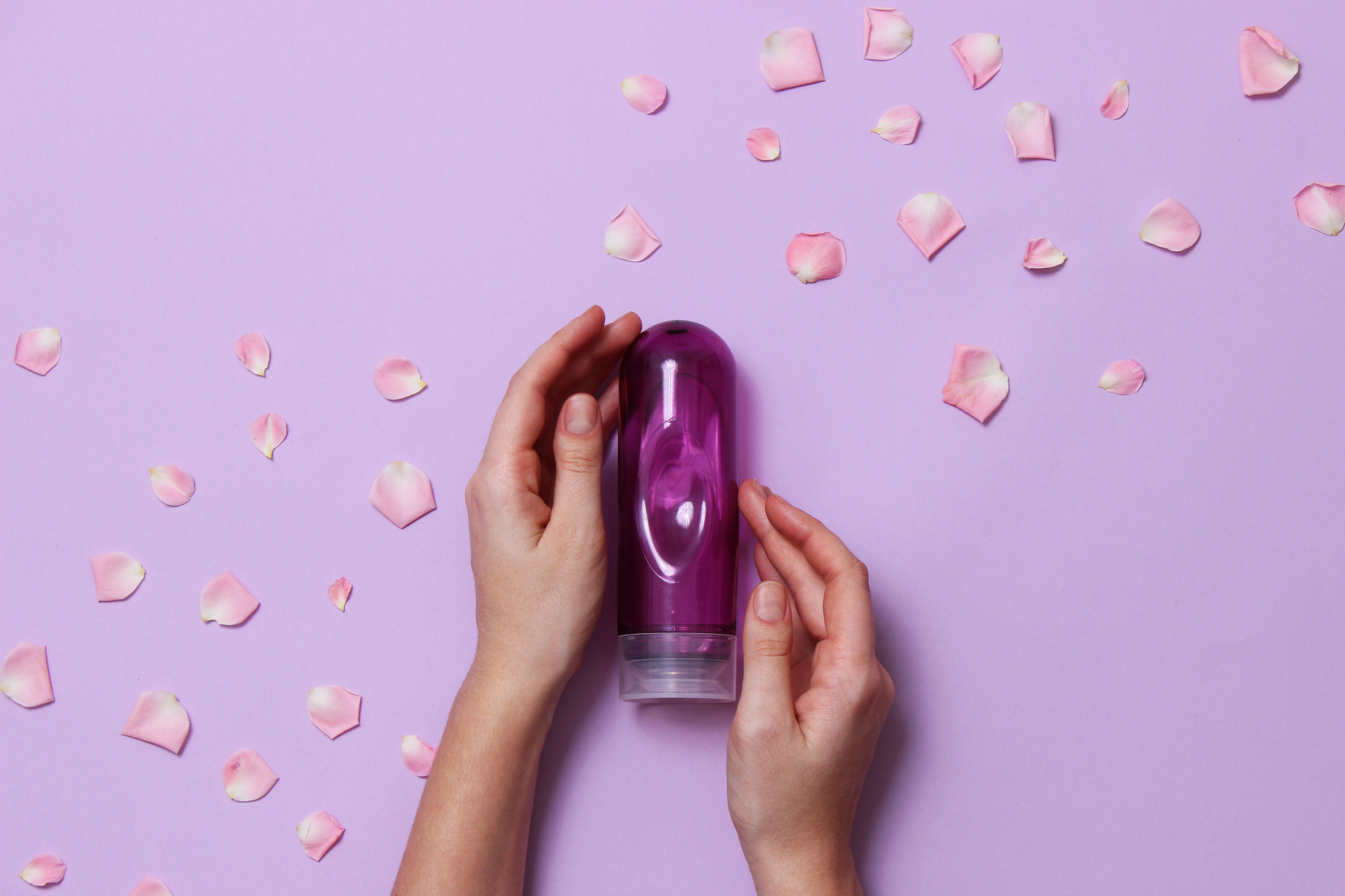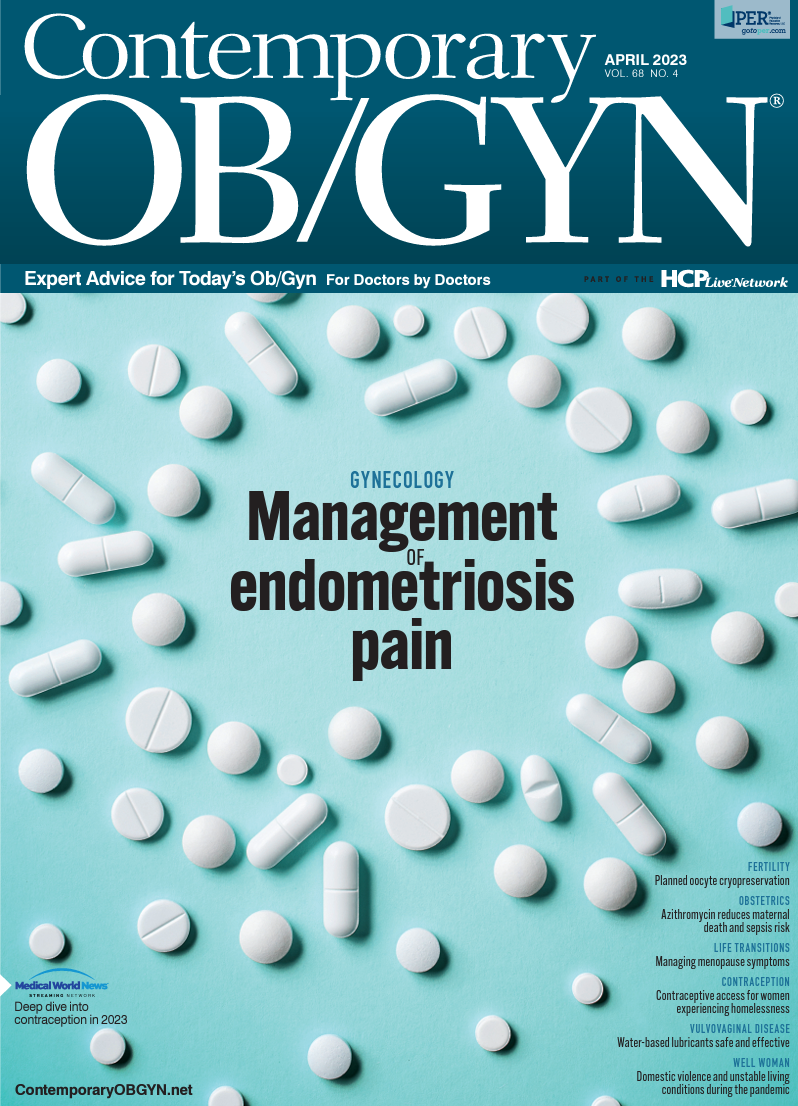Efficacy and safety of water-based personal lubricants
Five water-based personal lubricants were found effective, safe, and well tolerated for the relief of discomfort from vaginal dryness, according to a recently published study.
Adobe Stock/ White bear studio

Five water-based personal lubricants were found effective, safe, and well tolerated for the relief of discomfort from vaginal dryness, according to a randomized study published in The Journal of Sexual Medicine.
Updated personal lubricant guidelines for osmolality and vaginal pH from the World Health Organization (WHO) sparked the study.
“There have been recent discussions about the impact of osmolality and vaginal pH on vaginal mucosa,” said principal investigator Michael Krychman, MD, MPH, executive director of The Southern California Center for Sexual Health and Survivorship Medicine in Newport Beach.
The study was sponsored by Reckitt Benckiser Ltd (Reckitt), a global consumer goods corporation which produces health, hygiene, and nutrition products, including several personal lubricants.
“The company was very interested in reformulating their lubricants to meet the WHO guidelines of an osmolality level below 1200 mOsm/kg,” Krychman told Contemporary OB/GYN®. “Because osmolality may impact the vaginal mucosa, Reckitt wanted to test its reformulations.”
Furthermore, clinicians are increasingly concerned about the effect these products and ingredients have on health, such as the potential efficacy on sexual function and the possibility of adverse effects.
The 5 popular commercially available over-the-counter (OTC) lubricants from Reckitt evaluated were reformulated K-Y Jelly; reformulated K-Y Ultragel; Durex Naturals Intimate Gel Moisture Plus, marketed in the United States as K-Y Natural Feeling Moisture Plus; reformulated Durex Play Feel, marketed in the United States as Queen V P.S. I Lube You; and original Durex Play Feel, a well-established hyperosmolar as a comparator.
All 4 reformulated products meet the current WHO osmolality guidelines of lower than 1200 mOsm/kg and a pH value of 4.5. Prior to reformulation, though, only 1 of the 4 products met current WHO standards; the rest had a higher osmolality value and a higher pH value.
A total of 174 women, aged 18 to 65 years, with mild-to-moderate vaginal dryness and dyspareunia completed the open-label, parallel-design study, which was conducted at a Proderm GmbH clinical investigation center in Hamburg, Germany, from March to June 2021.
Participants were randomized to 1 of the 5 lubricants and were instructed to use their allocated lubricant during vaginal intercourse at least once a week over a 4-week period.
Most participants within each treatment group reported mild or moderate dyspareunia and vaginal dryness on the Verbal Rating Scale during the 3 months prior to screening.
The Female Sexual Function Index (FSFI), a validated questionnaire, measured sexual functioning after 4 weeks of use to indicate lubricant performance.
The primary endpoint, which was a prespecified increase in FSFI ≥4 points from baseline after 4 weeks of use, was achieved by all 5 lubricants. There was also a statistically significant improvement across all six domains of the FSFI (sexual desire, sexual arousal, lubrication, orgasm, satisfaction, and pain) from baseline to 4 weeks of use, with all 5 lubricants: P < 0.000 for lubrication and pain reduction; P < 0.05 for the other 4 domains.
No serious adverse events were observed. The tolerance of all 5 lubricants was also rated as good/very good.
“Reformulation with meeting the WHO standards did not affect efficacy or safety,” said Krychmanan, an ob-gyn at HerMD Virtual Services-California. “The reformulated lubricants were efficacious against vaginal dryness and painful intercourse in both pre- and postmenopausal women. In addition, the reformulation of the lowered osmolality and biologically similar vaginal pH did not compromise safety, efficacy, or overall sexual satisfaction or function.”
Moreover, the lowered-osmolality lubricants did not disrupt the vaginal microbiome. “You never really know what’s going to happen when you change the osmolality of a lubricant product,” Krychman said. “Is it going to be impactful? Is it still going to be efficacious? Is it going to cause more adverse events?”
In 4 of the 5 products (with the exception of Durex Naturals Intimate Gel Moisture Plus), vaginal moisture decreased at 2 hours and 24 hours after a single application. This was most pronounced 2 hours after application and less evident after 24 hours.
Likewise, vaginal pH slightly increased in all treatment groups 2 hours after product application but was restored in most cases after 24 hours.
“This indicates that for both measures, the intravaginal microenvironment is largely unaffected by any of the tested lubricants in the long run,” Krychman said. In addition, next-generation amplicon sequencing of microbiological swabs showed that none of the lubricants had a significant impact on the composition of the vaginal microbiome after 4 weeks of use.
Krychman believes clinicians will be surprised by the findings.
The 4 reformulated water based personal lubricant products will become the premier lubricants, according to Krychman. “I think this study has far-reaching implications,” he said. “Many people thought that osmolality was the be-all and end-all, but we now know from this clinical research that even lower osmolality does not affect the biome.”
Women can use lubricants at various stages in their life cycle. “There may be certain times in a woman’s life stage where she can use a lubricant with a low osmolality and still have safety and efficacy, while other times she does not have to worry about choosing a lubricant that has low osmolality and a low pH.”
However, the majority of water-based products available OTC do not meet the new WHO standards, according to Krychman. “They have high osmolalities and they are not similar to the vaginal pH,” he said. “So, there is a theoretical potential for cellular damage and for disruption of the vaginal biome.”
The 5 lubricants tested can be used not only to relieve symptomatology of vaginal dryness and dyspareunia, but to enhance overall sexual satisfaction.
“One lubricant doesn’t necessarily meet all the requirements that a woman may have,” Krychman said. “Choice may be dependent on her medical history, her medications, her stage of life and her sexual repertoire. For many women who are perhaps sensitive to higher osmolality or may be sensitive to lubricants that do not meet WHO standards, there are safe and effective lubricant alternatives.”
Krychman noted that clinicians and consumers should be focused on research, rather than “lubricant media hysteria” that may overestimate and misrepresent the association of lubricant use with cell damage and increased risk of sexually transmitted infections. “It may be the additives and osmolality working in tandem, rather than one component in isolation, that is affecting the mucosa,” he said.
The study is a “springboard for further discussion,” Krychman said. “I think it adds to the growing body of literature for personal lubricants.”
Two limitations of the study are that the open-label design may have caused bias and most participants were Caucasian.
Disclosure:
Krychman is a consultant to Reckitt Healthcare and a digital editor for Contemporary OB/GYN®.
Reference:
Palacios S, Hood S, Abakah-Phillips T, Savania N, Krychman M. A randomized trial on the effectiveness and safety of 5 water-based personal lubricants [published online ahead of print, 2023 Feb 13]. J Sex Med. 2023;qdad005. doi:10.1093/jsxmed/qdad005

FDA approves Visby’s test for at-home STI identification
Published: March 28th 2025 | Updated: March 28th 2025The FDA has approved Visby Medical’s at-home sexually transmitted infection test, allowing women to screen for chlamydia, gonorrhea, and trichomoniasis without a prescription.
Read More
In this episode of Pap Talk, Gloria Bachmann, MD, MSc, breaks down what it means to be a health care provider for incarcerated individuals, and explores the specific challenges women and their providers face during and after incarceration. Joined by sexual health expert Michael Krychman, MD, Bachmann also discusses trauma-informed care and how providers can get informed.
Listen
